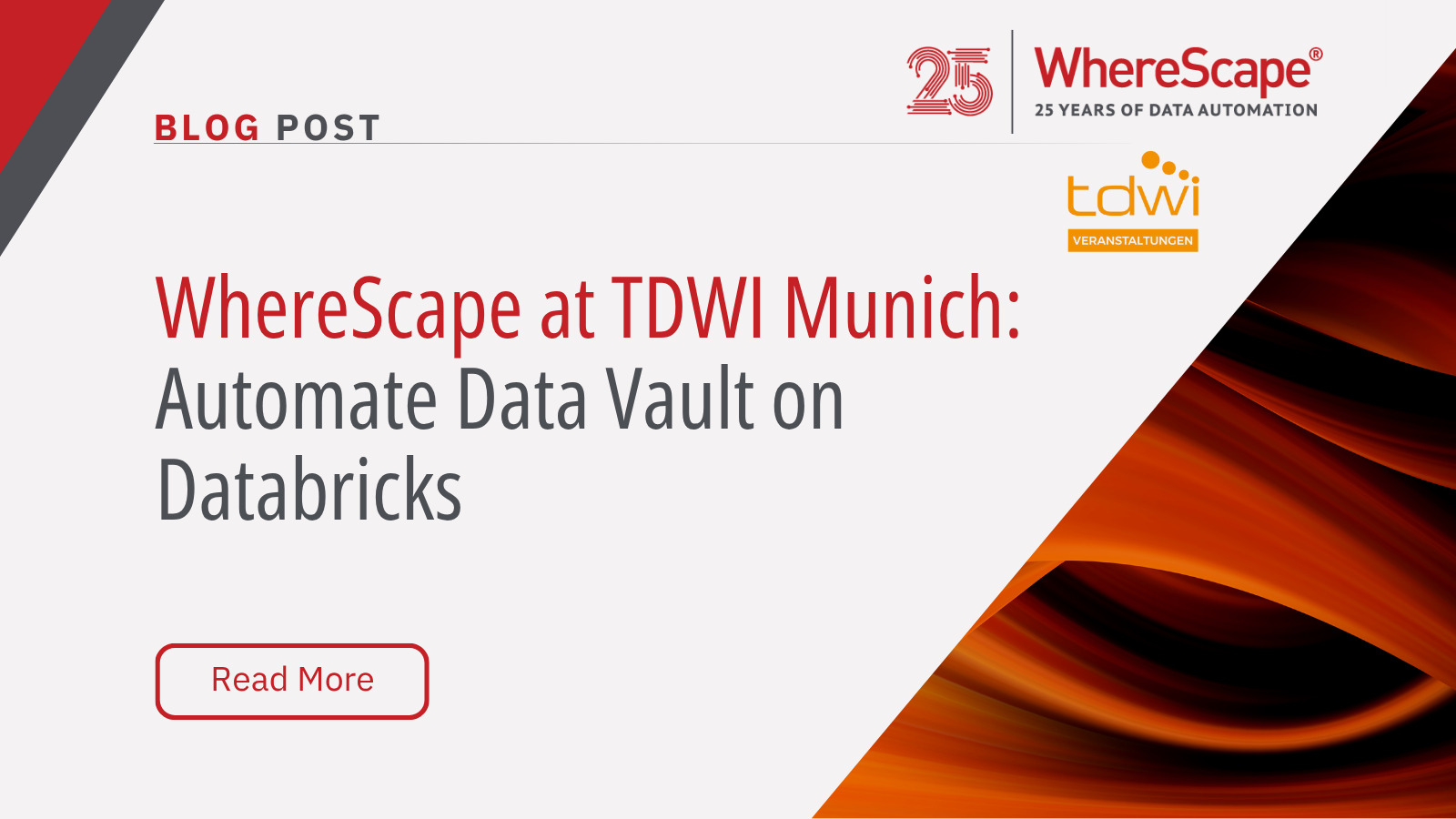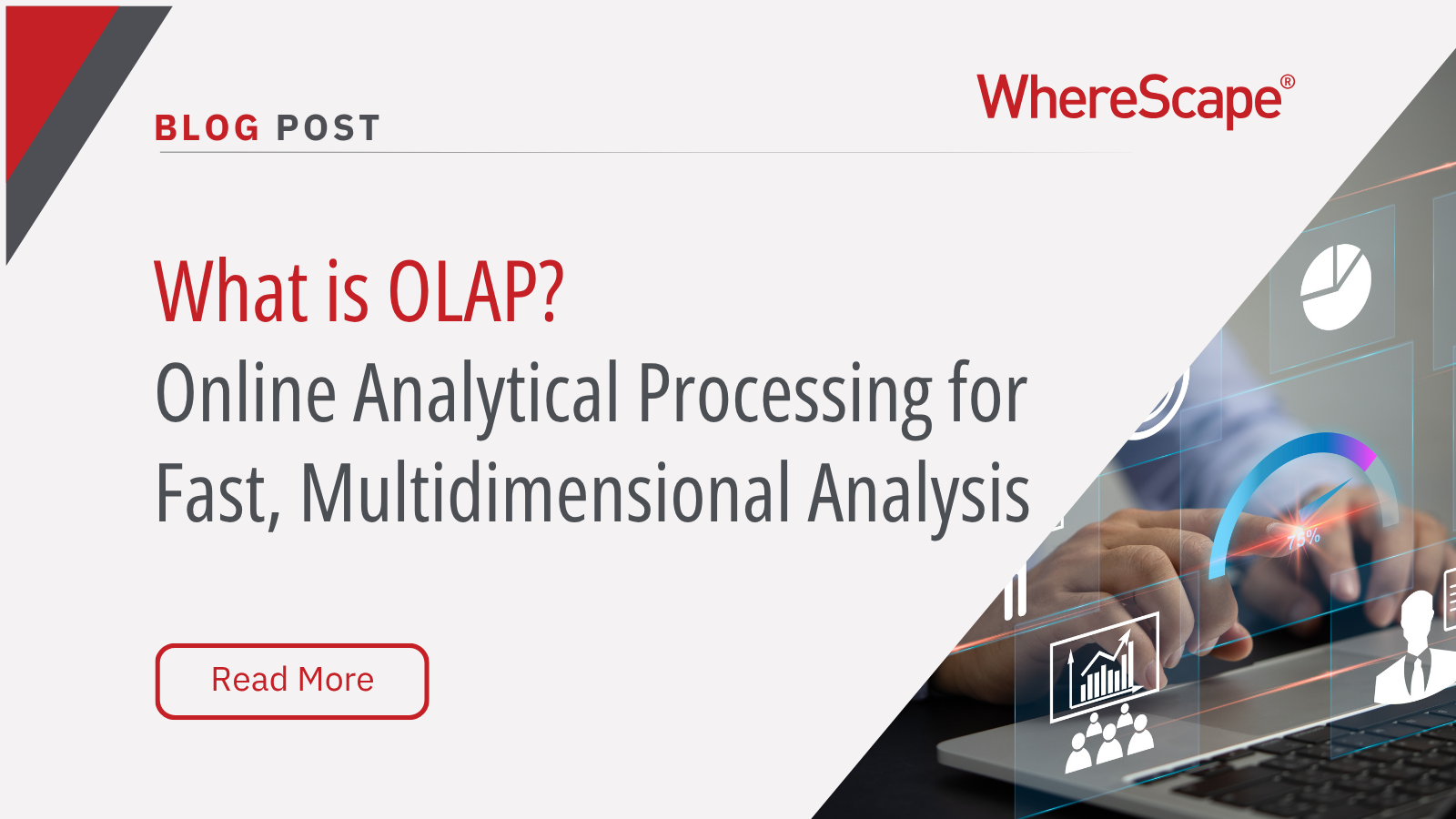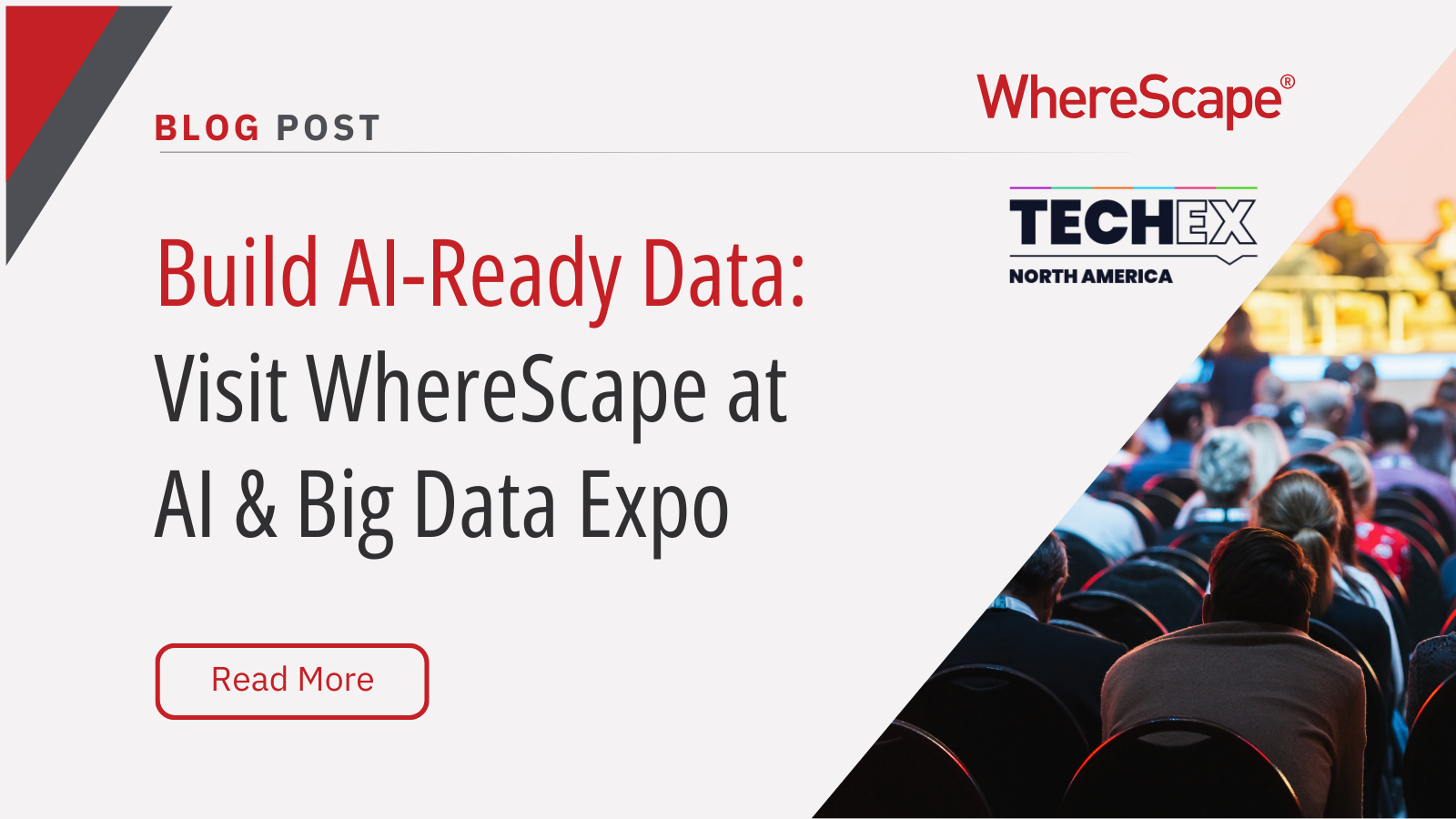WhereScape at PASS Summit On Tour - Dallas,...
Data Warehouse Design
Over this series of four posts, I explore the keys to a successful data warehouse, starting with data warehouse design. The topics for future posts are: build, operation, and maintenance.
Designing a Data Warehouse
In the design of a data warehouse and, indeed, over the entire warehouse journey, the most important principle to keep in mind is that what you are delivering is a cross-functional, long-life foundation for data provision and decision support. Let’s parse that out:
- Cross-functional may, in some cases, extend to cover the entire enterprise; in other cases, it may address only the needs of the different departments in a business unit. In either case, the data warehouse must be able to satisfy the unique needs of multiple decision support projects from diverse groups of business users.
- Long-life means that these projects will arise and mutate over many years; they cannot be known in advance when you first design your initial data warehouse.
- As a foundation for data provision, the data warehouse must provide consistent, reconciled, legally-binding data to its various business clients, to ensure that decisions made are reliable, auditable, and non-contradictory.
These characteristics have long bedeviled the design (and subsequent phases) of the process of delivering a data warehouse. If you have delivered a data mart, for example, you will know that you must meet the specific and (reasonably) well-known data needs of a single department, usually as quickly as possible. If you delivered input to a data lake, you will understand that flexibility of use—often called schema-on-read—is of paramount importance. Data marts and lakes are projects; a data warehouse is a process consisting of multiple projects, which must work together toward the goals outlined above.
Enterprise Data Model
At the heart of this process is a vision of what the data in the warehouse should ultimately look like. This vision is best described by an enterprise data model (EDM), consisting of the high-level entities that a business must track: customers, products, orders, and so on. (In Bill Inmon’s terminology, these are called subject areas.) In the past, EDMs were often built from scratch, a process that provided data modelers with jobs for life, but frustrated the business users who were drawn into drawn-out definitional debates rather than seeing the results they needed.
Today, many EDMs are customized from standard industry models—a much faster and easier process. After all, how different are the characteristics of customers, for example, across various banks? In many more cases, an EDM already exists within the organization as a result of previous data warehouse or other enterprise-wide undertakings, such as master data management, for example.
Data Warehouse Challenges
The major design challenge for today’s data warehouses is defining and refining the logical (and ultimately physical) structure of the relational tables of the data warehouse. Ultimately, a good design must take into account the limitations of the source systems, the challenges in joining data from multiple sources, and the possibility of changes in both business needs and source system structures over time. These are topics for later posts focusing on build and maintenance concerns. For now, we focus on how to achieve the “ideal structure” to facilitate loading, updating and using data warehouse tables.
3NF
The traditional design approach recommends mapping high-level entities to “loosely normalized” tables—based initially on third normal form (3NF), but relaxed sufficiently to ease population and querying performance issues that arise from strict 3NF implementation. The goal of this approach is to create a cross-enterprise, functionally neutral set of data that can be used for a wide variety of query, analysis, and reporting needs.
3NF was originally designed to ensure insert/update/delete consistency of operational databases, as was thus suboptimal for data warehousing. Ralph Kimball proposed an alternative approach in the 1990s known as dimensional or star-schema models. While widely used—mainly because it promises faster delivery of decision support projects—its design is also suboptimal for a data warehouse, being highly optimized for slice-and-dice analysis, and driven by the specific business needs of a particular department. In essence, it is more suitable for a data mart than a data warehouse.
Data Vault
In the early 2000s, Dan Linstedt defined the Data Vault Model, a hybrid of the normalized and star schema forms above, which better balances the generality of loosely normalized and the delivery speed of dimensional models. The Data Vault is a detail-oriented, history-tracking, specially linked set of normalized tables designed to support multiple functional business areas. The model consists of three specialized types of entities/tables: hubs based on rarely changed business keys, links that describe associations or transactions between business keys, and satellites that hold all temporal and descriptive attributes of business keys and their associations. Version 2.0, introduced in 2013, consisting of a data model, methodology, and systems architecture, provides a design basis for data warehouses that emphasizes core data quality, consistency, and agility to support enterprise-wide data provision needs.
With design sorted, it’s time to move to the build phase. That is the topic of the next post.
You can find the other blog posts in this series here:
- Week 2: Building a Data Warehouse
- Week 3: Operating a Data Warehouse
- Week 4: Maintaining a Data Warehouse
Dr. Barry Devlin is among the foremost authorities on business insight and one of the founders of data warehousing, having published the first architectural paper on the topic in 1988. Barry is founder and principal of 9sight Consulting. A regular blogger, writer and commentator on information and its use, Barry is based in Cape Town, South Africa and operates worldwide.
WhereScape at TDWI Munich: Automate Data Vault on Databricks
WhereScape at TDWI Munich 2025: Automate a Full Data Vault on Databricks in Just 45 Minutes June 24–26, 2025 | MOC Munich, Germany As data complexity grows and business demands accelerate, scalable and governed data architectures are no longer optional—they're...
What Is OLAP? Online Analytical Processing for Fast, Multidimensional Analysis
Streamline your data analysis process with OLAP for better business intelligence. Explore the advantages of Online Analytical Processing (OLAP) now! Do you find it challenging to analyze large volumes of data swiftly? A Forrester study reveals that data teams spend...
Build AI-Ready Data: Visit WhereScape at AI & Big Data Expo
June 4–5, 2025 | Booth 202 | Santa Clara Convention Center As organizations scale their artificial intelligence and analytics capabilities, the demand for timely, accurate, governed, and AI-ready data has become a strategic priority. According to Gartner, through...
Automating Star Schemas in Microsoft Fabric: A Webinar Recap
From Data Discovery to Deployment—All in One Workflow According to Gartner, data professionals dedicate more than half of their time, 56%, to operational tasks, leaving only 22% for strategic work that drives innovation. This imbalance is especially apparent when...
What is a Data Model? How Structured Data Drives AI Success
What is a data model? According to the 2020 State of Data Science report by Anaconda, data scientists spend about 45% of their time on data preparation tasks, including cleaning and loading data. Without well-structured data, even the most advanced AI systems can...
ETL vs ELT: What are the Differences?
In working with hundreds of data teams through WhereScape’s automation platform, we’ve seen this debate evolve as businesses modernize their infrastructure. Each method, ETL vs ELT, offers a unique pathway for transferring raw data into a warehouse, where it can be...
Dimensional Modeling for Machine Learning
Kimball’s dimensional modeling continues to play a critical role in machine learning and data science outcomes, as outlined in the Kimball Group’s 10 Essential Rules of Dimensional Modeling, a framework still widely applied in modern data workflows. In a recent...
Automating Data Vault in Databricks | WhereScape Recap
Automating Data Vault in Databricks can reduce time-to-value by up to 70%—and that’s why we hosted a recent WhereScape webinar to show exactly how. At WhereScape, modern data teams shouldn't have to choose between agility and governance. That's why we hosted a live...
WhereScape Recap: Highlights From Big Data & AI World London 2025
Big Data & AI World London 2025 brought together thousands of data and AI professionals at ExCeL London—and WhereScape was right in the middle of the action. With automation taking center stage across the industry, it was no surprise that our booth and sessions...
Why WhereScape is the Leading Solution for Healthcare Data Automation
Optimizing Healthcare Data Management with Automation Healthcare organizations manage vast amounts of medical data across EHR systems, billing platforms, clinical research, and operational analytics. However, healthcare data integration remains a challenge due to...
Related Content
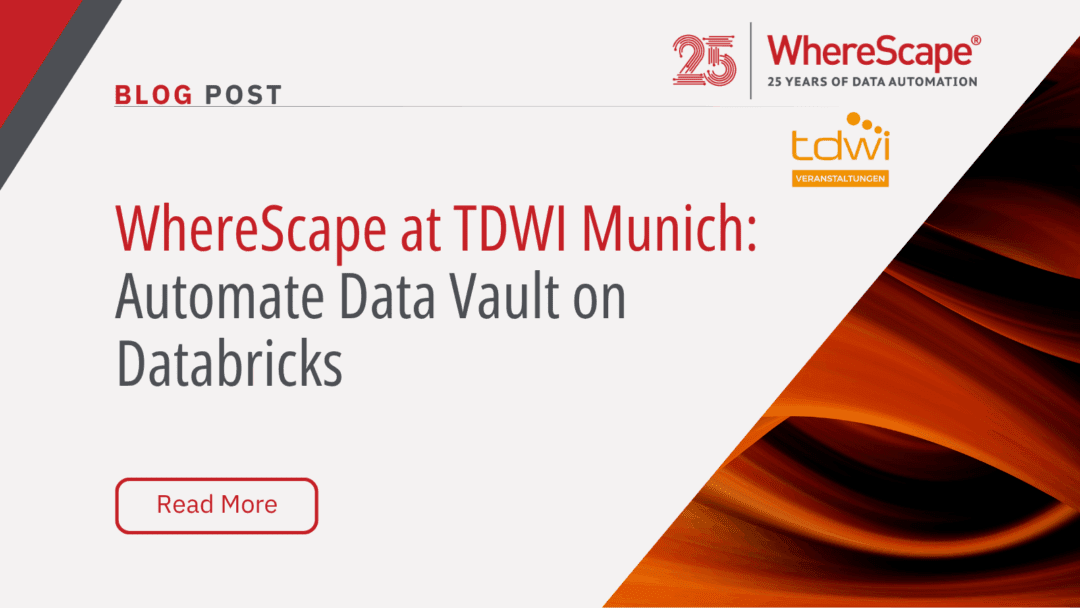
WhereScape at TDWI Munich: Automate Data Vault on Databricks
WhereScape at TDWI Munich 2025: Automate a Full Data Vault on Databricks in Just 45 Minutes June 24–26, 2025 | MOC Munich, Germany As data complexity grows and business demands accelerate, scalable and governed data architectures are no longer optional—they're...
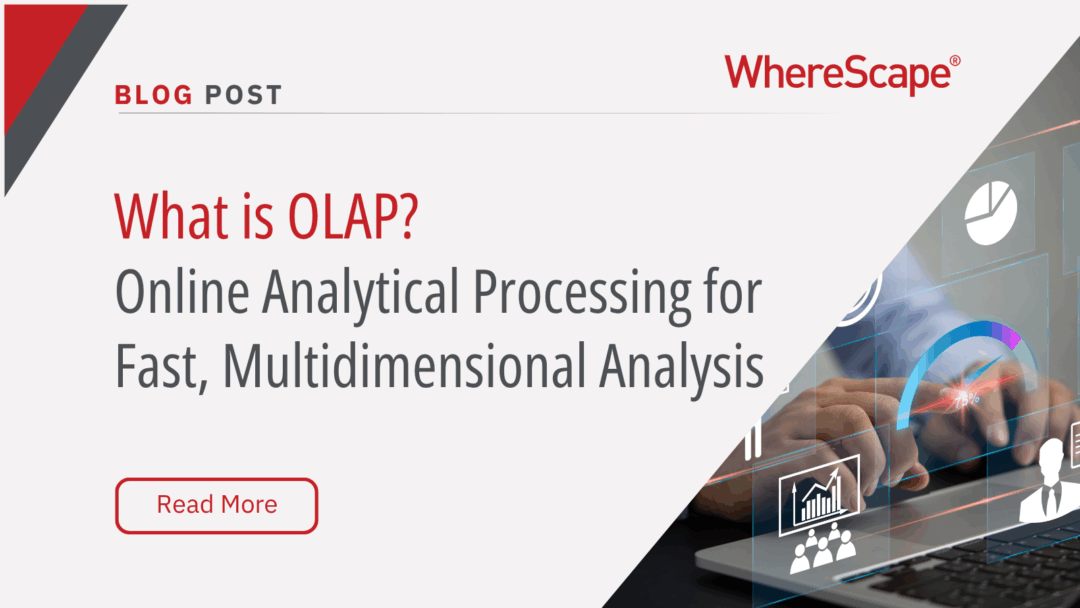
What Is OLAP? Online Analytical Processing for Fast, Multidimensional Analysis
Streamline your data analysis process with OLAP for better business intelligence. Explore the advantages of Online Analytical Processing (OLAP) now! Do you find it challenging to analyze large volumes of data swiftly? A Forrester study reveals that data teams spend...
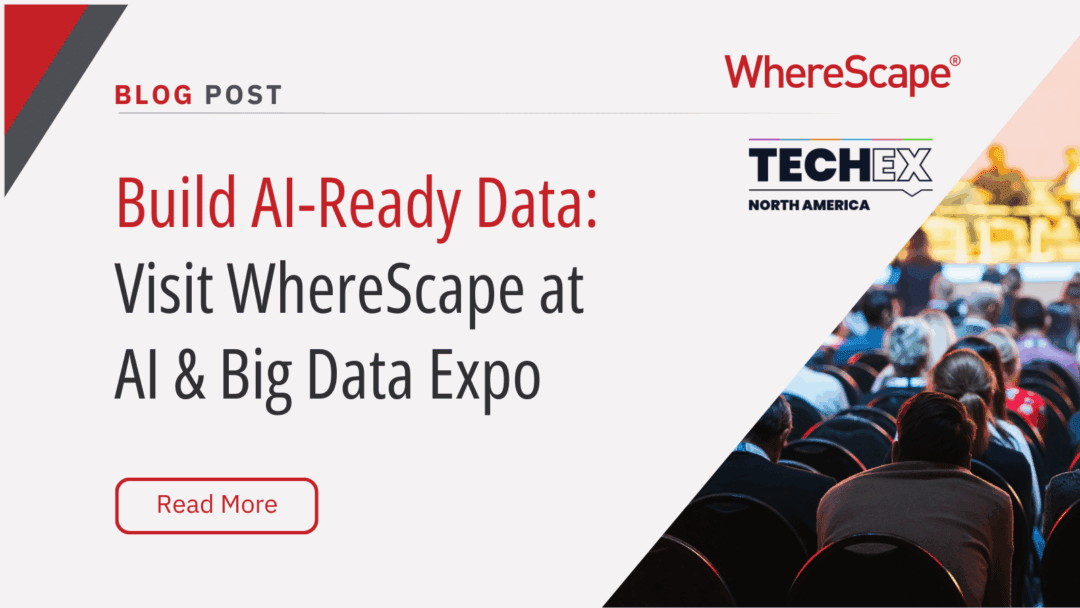
Build AI-Ready Data: Visit WhereScape at AI & Big Data Expo
June 4–5, 2025 | Booth 202 | Santa Clara Convention Center As organizations scale their artificial intelligence and analytics capabilities, the demand for timely, accurate, governed, and AI-ready data has become a strategic priority. According to Gartner, through...

Automating Star Schemas in Microsoft Fabric: A Webinar Recap
From Data Discovery to Deployment—All in One Workflow According to Gartner, data professionals dedicate more than half of their time, 56%, to operational tasks, leaving only 22% for strategic work that drives innovation. This imbalance is especially apparent when...


